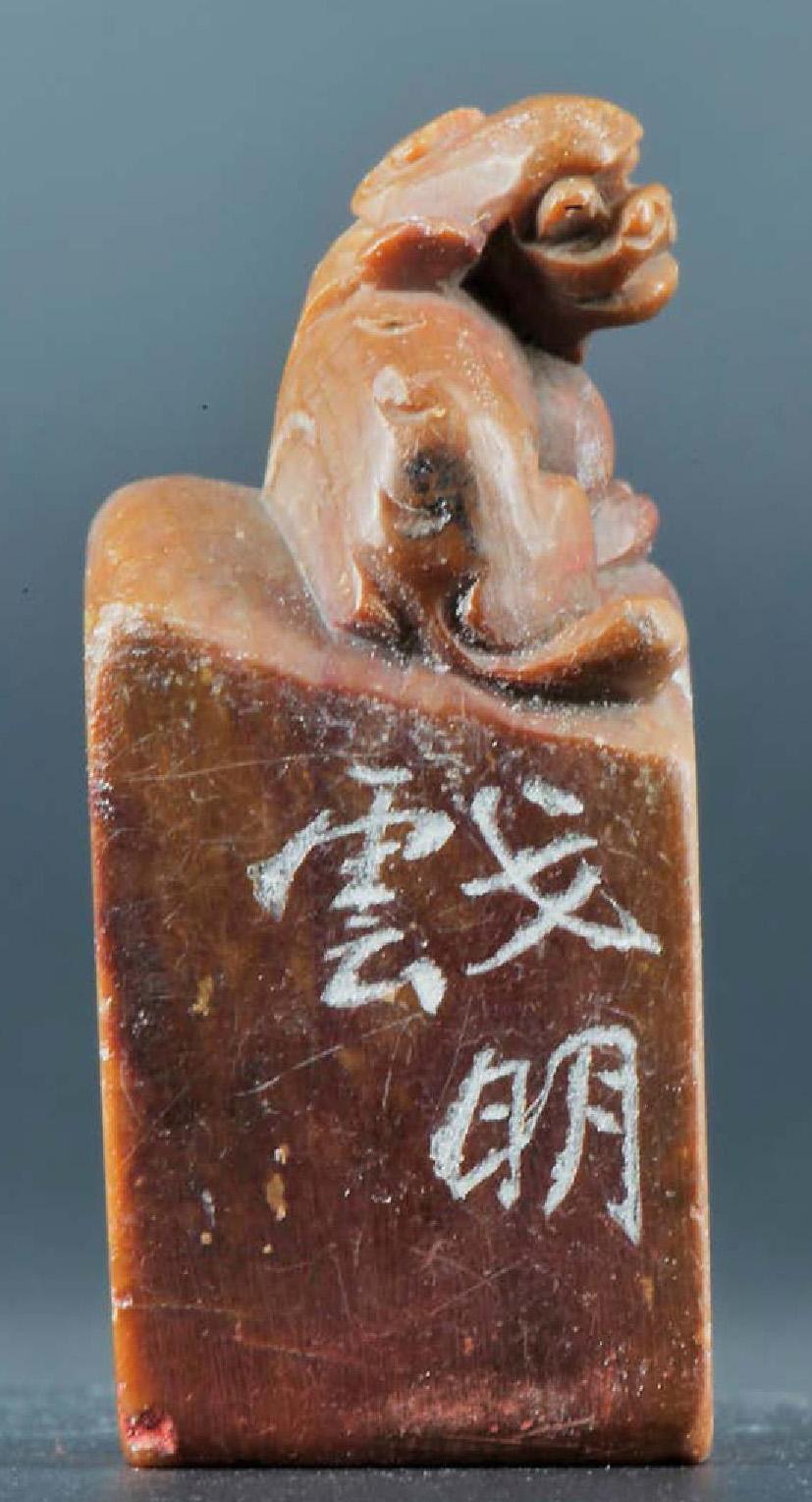弘一大师“印藏”轶事
申俭

弘一大师出家前名李叔同,1880年10月出生于天津桐达李家,1942年10月圆寂于福建泉州。李叔同“二十文章惊海内”,是那个时代最有才华的天才之一,中国新文化运动先驱者。早年将西方油画、钢琴、话剧等引入国内,且以擅书法、工诗词、通丹青、达音律、精金石、善演艺而驰名于世,是才气横溢的艺术教育家。1912年他到浙江两级师范学校任教后,于1914年加入西泠印社,1918年农历七月十三日,李叔同在西泠印社创始人之一叶为铭推荐下,由虎跑寺大护法、西泠印社创始人之一丁辅之介绍,披剃于虎跑寺,取名演音,法号弘一,成为一代高僧。
李叔同出家前夕,把所用印章赠予西泠印社。为此,叶为铭仿昔人“诗冢”“书藏”遗意,在孤山鸿雪径的石壁上开凿庋藏,外覆尺余见方的石碑,镌阴文小篆“印藏”二字,六行隶书跋文记述了“印藏”的深意,“庶与湖山并永”。
1963年,西泠印社六秩庆祝前夕,印社同人恐印藏壁龛年久泐损,特起出94方印章作为文物收藏。这些印章,印文内容均系李叔同的姓氏、别号、斋号,为他本人的常用印,既有西泠印社社友、吴昌硕的著名弟子、乐石社师生所刻,也有一些不甚为人熟知的篆刻家,其中一方编号1769的文物藏品印章,还长期被误读为“戈明云”,并多次出版。随着对“印藏”内容的研究深入,这些沉默的印章为我们展现了“印藏”视角下李叔同艺文交游圈,其中与演说家戈朋云的艺文交往钩沉出史海,也为浙江在中国对外文化交流史的领先地位添上浓重一笔。
戈朋云(1867—1927),名戈忠,字鹏云,一字朋云,以字行,别字伯虎,别署恒寿堂戈,父亲戈鲲化(1836-1882)为哈佛大学第一位中国教授,母亲戈叶氏系满族,安徽休宁人,出生于浙江省宁波府鄞县天封桥莫子喜东巷人寿堂。
戈朋云的父亲戈鲲化是近现代中国对外文化交流中的先驱者。出版《人寿堂诗钞》和《人寿集》两部著作,在当时中国文化圈中颇有名气。清光绪五年(1879年),由他在宁波口岸任职税务司官员的中文学生、毕业于哈佛大学的美国人杜德维推荐,于5月26日在上海与美国哈佛大学签订赴美任教3年(1879年9月1日至1882年8月31日)的合同,每月束修洋钱贰百元正。当年8月底,戈鲲化携带家眷和一大批中国书籍抵达哈佛大学,1879年10月22日正式开课,成为第一位被哈佛大学聘为中文教授的中国学者。戈鲲化赴美执教的时间虽然只有短短3年,然而由于他的敬业和才能,在中美文化交流史上依然创造出三个“第一”的纪录:登上哈佛讲台的中国第一人,编撰出第一部由中国人为西方人写的中国文化教材,为哈佛大学燕京图书馆的第一批图书来源提供基奠。目前燕京图书馆为西方世界收藏中国典籍最多、藏书价值最大的东亚图书馆,图书馆内左侧墙上悬挂着戈鲲化的两张照片,供人瞻仰。
1879年,12岁的戈朋云随父赴美,青少年时期受过很好的西学教育,在波士顿就学期间帮助抄写由父亲编写的《华质英文》。1882年其父去世以后,回国到上海入读教会学校中西书院,1883年留学哈佛大学。1899年经天津入京赴任京师大学堂英文副教习,同年因其母在上海去世辞职返沪丁忧。戈朋云回沪后创办银炉业,专事为盐业银行熔炼碎银,1899年9月18日在上海英租界大马路逢吉里创办中英学社。
1898年10月,李叔同与母亲、妻子一起南下来到上海,加入城南文社,1899年与许幻园、袁希濂、周炳城等结为金兰,号为“天涯五友”,在周炳城、袁希濂的幫助下,找到李氏族人在天津时结识的昔日好友戈朋云,据说当时在中英学社补习半年多英语。戈朋云在天津时曾得到李氏族人的周全照顾,因此戈朋云为李叔同篆刻了这方“当湖息霜”白文寿山石印章,以示感谢。
此印印面为2公分见方,高4.7cm,边款仅为“戈朋云”。由于朋字左边的笔画勾连,西泠印社当时手中并无任何“印藏”的历史资料信息,账册登记时按照常规“戈明云”识读至今。此边款的笔意潇洒流畅,书写习惯和笔迹与戈朋云现存的书画作品相同,从戈朋云现存书画作品签名便可见其一致性,可充分印证为戈朋云边款。
李叔同显然很喜欢此方印章,即在同年由上海致天津管家徐耀庭信封正面上钤印,又在1899年苏体行书《王次回平江孝仪看灯词》上钤盖(此二件天津博物馆藏)。
Born Li Shutong in October 1880 in Tianjin, Master Hongyi was one of the most talented painters, dramatists, calligraphers, musicians, seal cutters and poets. As a pioneer of Chinas New Culture Movement, Li taught at Zhejiang Secondary Normal School (predecessor of the Hangzhou High School) in 1912, before joining the Xiling Seal Art Society in 1914. It is during his stay at the society that Li was introduced to the Hupao Temple and ordained as a Buddhist monk on the thirteenth day of the seventh month in the lunar calendar in 1918.
Shortly before Li became a monk, he donated the entire collection of his seals to the Xiling Seal Art Society. In line with traditions, Ye Weiming, one of the founders of the society, specially carved a niche on the stonewall along the Hongxue Path on the Solitary Hill, and put the seals in the niche. Covering the niche was a small stone tablet on which two characters “Yin Cang” (literally Seal Collection) in xiaozhuan were engraved; beside were six lines of postscript written in lishu, explaining the purpose of the collection: “May [the seals] stay with the lake and the hill forever”.
In 1963, on the eve of the 60th anniversary of Xiling Seal Arts Society, 94 seals from the collection were pulled out in case they might suffer damage after long years in storage. They were among those seals regularly used by Li Shutong. Some of them were cut by established seal masters, and a few by lesser-known engravers, one of which, numbered “1769”, had long been misread as “Ge Mingyun” (戈明云) and even published in various books.
As the research on this collection deepens, these silent seals have revealed a picture of Li Shutongs friend circle. His friendship with Ge Pengyun (戈朋云),instead of the wrongly believed “Ge Mingyun”) also rose to the surface.
Born Ge Zhong in 1867, Pengyun was Ges courtesy name, which he preferred to use in public. He also went by the name of Bohu, and sometimes used the signature “Hengshoutang Ge”. Ge Kunhua (1836-1882), Pengyuns father, taught at Harvard and was the universitys first instructor from China. His mother was Manchu, born in Zhejiangs Ningbo city.
A pioneer in promoting Chinese culture, Ge Kunhua was a prominent figure among the Chinese literati at the time. In 1879, through E. B. Drew, a graduate of Harvard College working in Ningbos customs service and a Chinese-language student of Ges, Ge Kunhua signed a three-year contract ( September 1, 1879 to August 31, 1882) with Harvard as a Chinese language instructor, earning a monthly salary of 200 dollars. At the end of August 1879, Ge arrived at Harvard with his family and tons of Chinese books.
Although Ge stayed at Harvard for only three years, he is remembered for his three “firsts”: the first instructor from China to stand on the Harvard podium, the author of the first textbook on Chinese culture written by a Chinese for Western readers and laying the foundation for the Harvard-Yenching Library by contributing the first collections of books. Two photos of him are still hung on the wall of the library, which holds the most comprehensive East Asian collection in the Western world.
Among Ge Kunhuas family members when they travelled to the US was his son Ge Pengyun, who was 12 at the time. Receiving a good Western education, Pengyun was already able to help transcribe for his father at Boston. In 1882, after his father passed away, Pengyun went back to Shanghai and studied at the Anglo-Chinese Methodist College, before he was enrolled at Harvard the next year. On September 18, 1899, he established the Anglo-China Society in Shanghai.
It is at the Society that Li Shutong was said to have studied English under Ge Pengyun for over six months. Ge had already been an old friend of the extended Li family back when he worked in Tianjin. To show his gratitude, Ge carved the seal—No. 1769, one of his very rare works, and sent it to Li Shutong as a gift. Apparently, Li was very fond of the seal, as it had been used in a number of his personal letters and calligraphies. Ge Pengyun was not only a good orator, but a political activist. In 1900, he and his family were forced into exile and lived in Japan for some time after the ill-fated Hundred Days Reform. He died in 1927.
——《李叔同—弘一大师年谱长编》评介
——《李叔同——弘一大师影像》简评

